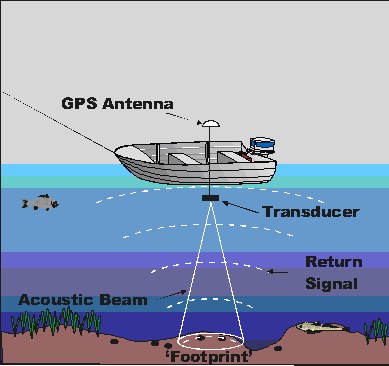Single Beam Echosounder
A single beam echosounder or ‘depth sounder’ is a system capable of accurately measuring the water depth below a vessel (Figure 1). This is achieved by measuring the two-way travel time (e.g. from the ship to the seabed, and back again) of an acoustic pulse (or a burst of sound) emitted by the sonar transducer. The acoustic pulse typically ranges in frequency from 12 – 200 kHz, with lower frequencies required in deeper water. The reliability of the depth calculation is dependant on accurately knowing the sound velocity in sea water, which is usually around 1500 m/s depending on water temperature, salinity, and other factors. Single beam echosounders are routinely mounted on most sea-going vessels, and when attached to a GPS and recording device, provide an inexpensive seabed mapping tool.

Figure 1. Example of the components of a single beam echosounder mounted on a small boat [1].
- Penrose J D, Siwabessy P J W, Gavrilov A, Parnum I, Hamilton L J, Bickers A, Brooke B, Ryan D A and Kennedy P: Acoustic techniques for seabed classification, September 2005, Cooperative Research Centre for Coastal Zone Estuary and Waterway Management, Technical Report 32


